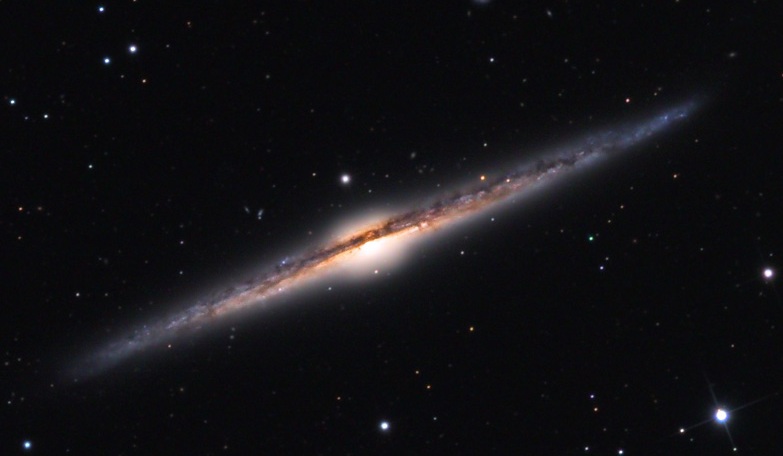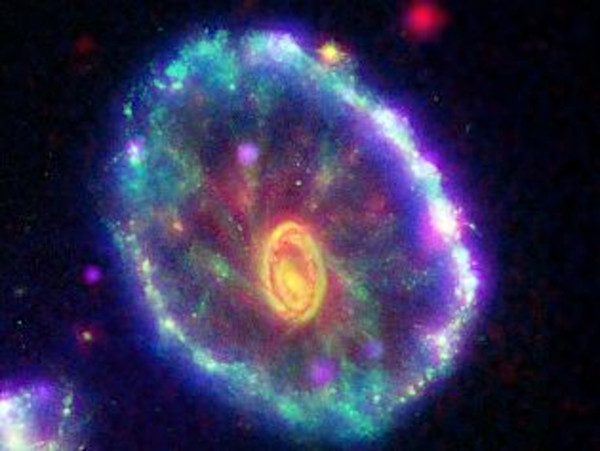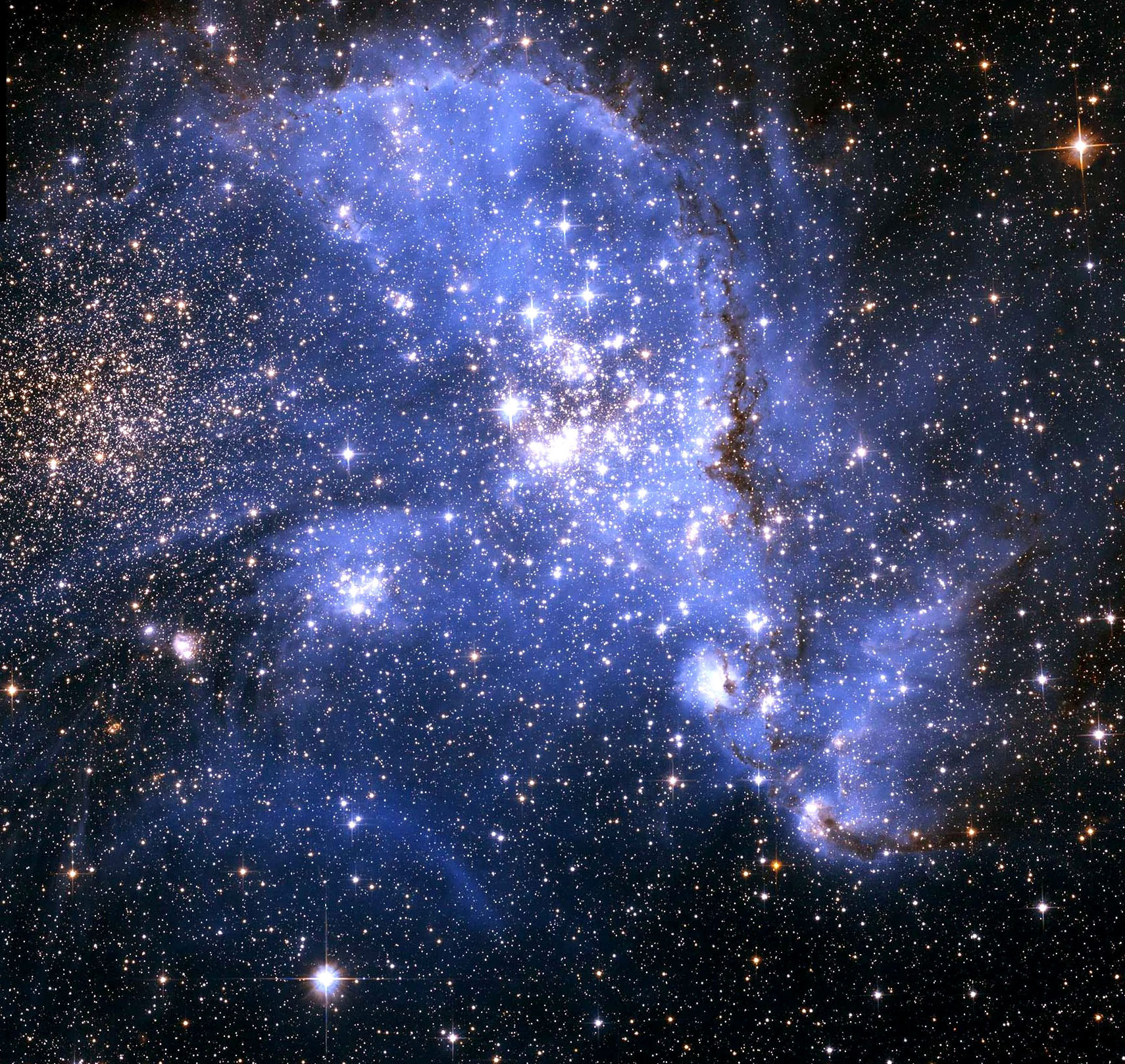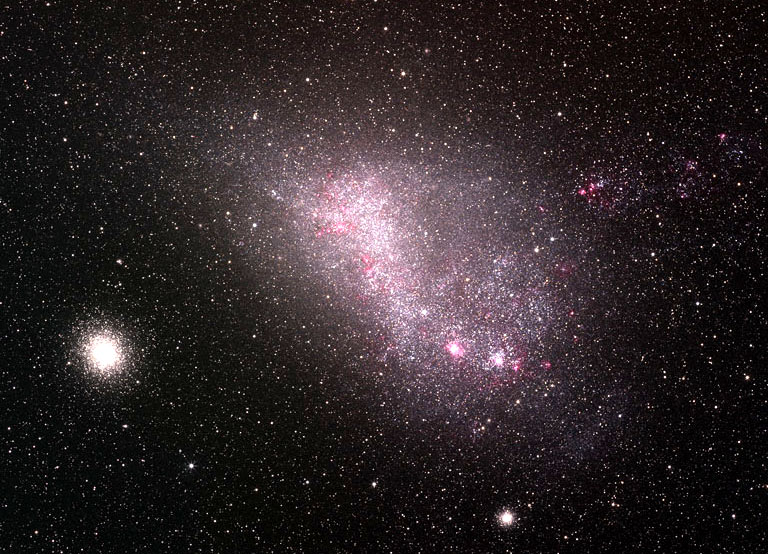Galaxies and the Milky Way
|
All galaxies >>
|
The Sun is located in the Orion Arm of our Galaxy and rotates at a speed of 254 km/s around the galactic center, completing one revolution every 250 million years. A large spiral galaxy like ours, can be seen with the naked eye. Located in the constellation Andromeda, the Great Nebula in Andromeda (M31) is identical to ours, it is located 2.3 million light-years. Together, these galaxies dominate the mass of the local group. One can only marvel at the beauty of these bricks of the universe. The galaxies are hundreds of billions, and their number increases every time our space technology is perfected, pushing the year. Galaxies are born, 3 to 4 billion years after the Big Bang. It is gravity that has transformed diffuse clouds of hydrogen and helium, into embryos of galaxies. These embryos have collapsed as a result of their own gravity. This collapse was compressed and heated gaseous matter, turning it into hundreds of billions of soft balls, a few million degrees, called "stars."
When all the gaseous matter has been transformed into stars, these galaxies become elliptical, 30% of galaxies are elliptical. Some galaxies are able to turn into stars, 80% of the gaseous mass, the remaining fifth is flattened into a thin disk, continuing to turn into stars, much more slowly and preferably along the spiral arms which are developing.
These are the spiral galaxies that dominate the galactic world, 60% of galaxies are spirals.
They are found mainly in peripheral regions of galaxy clusters. Other galaxies are much more time to convert the gaseous matter into stars, because they are dwarfs, they contain only a few billion stars, having no special form, they are called irregular galaxies.
10% of galaxies are irregular.

Galaxies live among other galaxies and interact with their environment, especially where the density of galaxies is very high, the heart of the cluster can be found 1000 to 10 000 galaxies in a cube of a few million light years aside. In our local group, there are only 10 galaxies in a cube of equal size. The galaxies in the cluster move at a speed of about 1000 km/s. In such a traffic collision risks are quite high (one every 100 million to 1 billion years).
These collisions can only be clashes, where the scratches are limited to a loss of outer stars, torn from their galaxy, they then form a sea of intergalactic stars.
This pile, a billion years later take the form of an elliptical galaxy. Occasionally, the collision takes place with full force, galaxies merge and the new more massive galaxy gets brighter, as in the image against.
If the collision between two spiral galaxies, the disk of one of them can be piercing, becoming a ring-shaped galaxy. This hole will not last, the stars of the border will eventually fill it in less than a billion years and become an elliptical galaxy.
There are some giant elliptical galaxies in the heart of the cluster, they are 10 times larger and brighter than their neighbors. Their mass exerts a gravitational force so that the galaxies passing close are swallowed.
The giant galaxy becomes even more massive and more attractive. A giant galaxy swallows a galaxy every billion years.

The Milky Way is the central region of our galaxy.
On the infrared image against this we see the exact center of our galaxy, known as the Central Molecular Zone and purple, the arch radio galactic center.
A number of emission nebulae are visible through the massive young stars that illuminate from within.
Like nearly all galaxies, our home galaxy at its center, a black hole.
This black hole is called Sgr A.
The galactic center is also home to the region of star formation, the most active of the galaxy.

This irregular galaxy which seems to orbit around the Milky Way is since observed time prehistoric by the inhabitants of the southern hemisphere, but it is the route around Ferdinand Magellan's world which will give his name. The Portuguese sailor Ferdinand Magellan and his equipage had all the time to study the southern sky during their navigation around the planet, at the beginning of the 16th century. These cosmic clouds are really irregular dwarfish galaxies, satellites of our own Galaxy. The Small Cloud of Magellan, Cover 15 000 light years in its biggest extension and contains several hundreds of million stars. 
Situated in about 210 000 light years of us in the constellation of the Toucan. It is a part of the most close galaxies, the Milky Way, with the dwarfish galaxies of the Big Dog (approximately 25 000 light years), of the Sagittarius (approximately 3,5 million light years) and of the Big Cloud of Magellan (approximately 179 000 light years).
With a visible magnitude of 2,7, it is also one of the most remote objects which can be seen in the bare eye. With a declension about 72 °, it is visible easily only since the southern hemisphere.
It forms a couple with the Big Cloud of Magellan, situated 20 ° more in the East.
As he, it is apparently an former blocked spiral galaxy which was deformed by the strengths of tide of the Milky Way.
The Small Cloud of Magellan is a member of the local Group, our galactic heap.
The Small Cloud of Magellan is connected with the Big Cloud by a bridge of gas and stars.
These two clouds undergo the strengths of tide of the Milky Way.

The galaxy of the Triangle, also known under the name of M33, is a spiral galaxy of type Sc, situated in the constellation of the Triangle.
The galaxy M33 NGC 598 the third of the local Group in ascending order, after the Milky Way and Andromeda. This galaxy is small compared with its neighbor, the galaxy of Andromeda M31, and with our Milky Way, but in the average of the spiral galaxies of the universe. M33 approaches us in 182 km/sec according to R. Brent Tully, or in 179 +/-3 km/sec according to the Ned. It is situated in 3 million years light.
This galaxy was probably discovered before 1654 by Hodierna, follower of Galilee, who maybe grouped it with the opened heap NGC 752.
It was independently rediscovered on August 25th, 1764 by Charles Messier who cataloged it as M33. Classified by William Herschel September 11th, 1784 under the name H V.17, the galaxy of the Triangle was one of the first spiral nebulas identified as some by William Parsons.

1997 © Astronoo.com − Astronomy, Astrophysics, Evolution and Ecology.
"The data available on this site may be used provided that the source is duly acknowledged."
How Google uses data
Legal mentions
English Sitemap − Full Sitemap
Contact the author